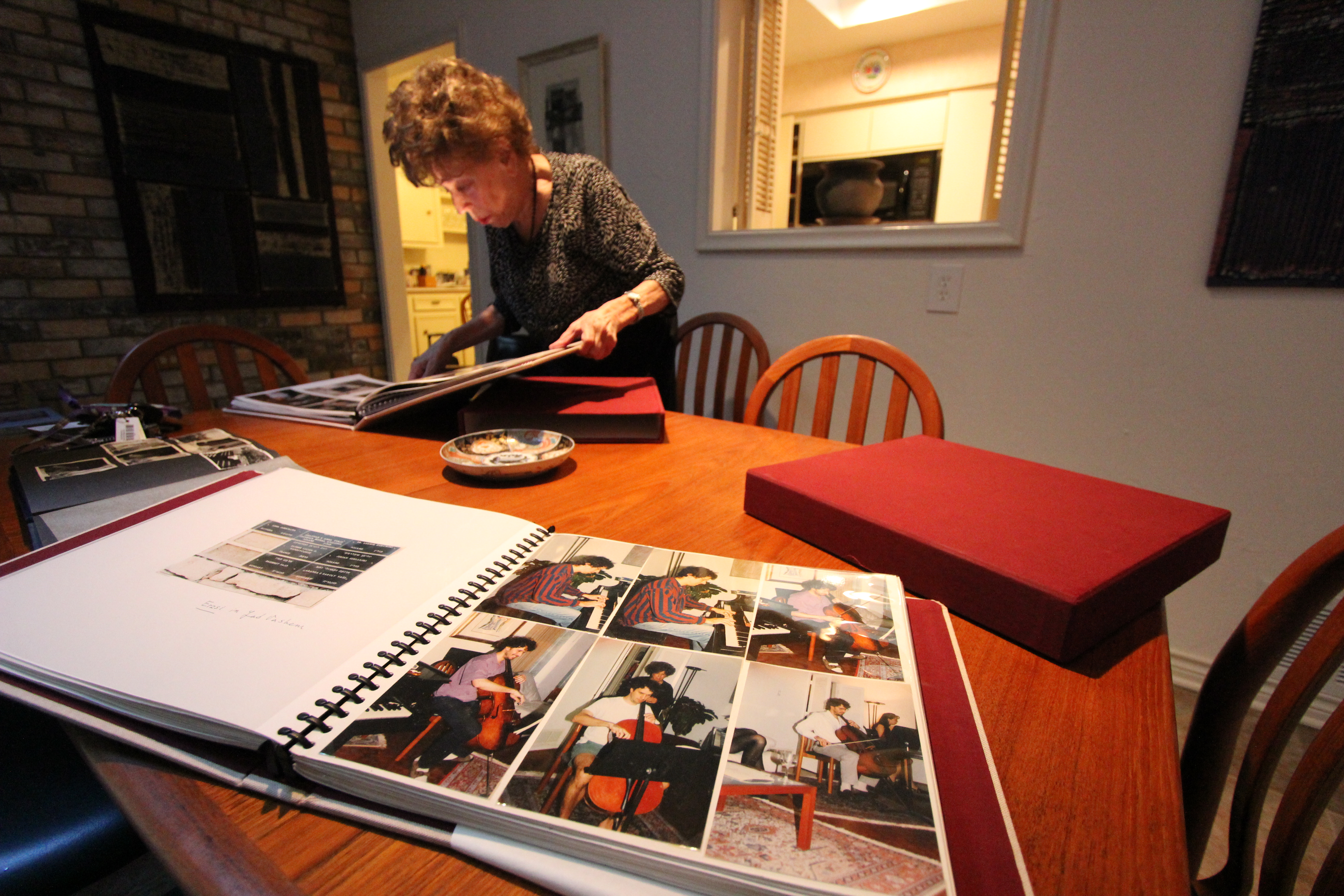Professor recounts experience during Nazi occupation of Hungary
This is the second part of a multi-part series on Ozsvath. Read the next issue of The Mercury for the next installment of the story.
Zsuzsanna Ozsvath pauses for a moment to take a sip from her cup of espresso. She leaves a little smudge of pink lipstick on the ceramic. She closes her eyes, pulling the memories to the forefront of her mind.
The 81-year-old professor in the Ackerman Center for Holocaust Studies retrieves a small prayer book and holds it in her hands. It was her mother’s during the war. Between the pages are slips of papers and photographs — precious mementos. The book falls open to the center.
A six-pointed cloth star the color of a daffodil sits innocuously on the page. She holds it up to the light. There are little perforations around the edges where it was sewn to her mother’s clothing.
“In two weeks, every (Jewish and) Hungarian man, woman, child — the infant and the aged — (wore) the yellow star,” she said.
By May 1, 1944, the Germans moved the Hungarian Jews living in the countryside into ghettos. 500,000 people were deported to Auschwitz in Poland during this period. No trains were running to Poland from Hungary anymore, so they were sent on walks known as death marches to the camp. Those that survived the transportation were killed in the gas chambers.
“I tried to convince my parents to commit suicide, because by that time I knew they (were) going to separate us, and that we (were) going to die,” Ozsvath said.
She was 10 years old when she made that suggestion.
Budapest was scheduled for deportation on July 2. At the last minute, Horthy, the governor of Hungary, decided not to go through with it. Instead, he sued for armistice, consenting that he had lost the war.
Ozsvath’s father was taken away on Oct. 20, 1944 as a slave laborer. He was sent on a death march. Miraculously, he survived three days on the walk before fleeing in the chaos of a busy street. He made it to a train station and boarded a car traveling back to Budapest just in time to reunite with his family.
“Although there were constantly police overlooking the stations … in this moment there (were) none, and so he got away, and he got home,” she said.
In Budapest, the family had a Slovakian nursemaid named Erzsi that moved with them from Békéscsaba.
When the Germans arrived and it was clear Ozsvath and her family were in danger, Erzsi promised she would save them all.
“How (could) she save (us)? She didn’t have any money. She didn’t have an independent life … It (was) very sweet, but it (had) no validity. But I was wrong to think that,” she said. “When the siege of Budapest started (and) virtually every house was ruined and bombed down, she was in the streets trying to get false papers.”
The family and Erzsi ultimately survived by hiding out in a so-called “White Cross Hospital.” Despite the name, it was merely an apartment building with stacks of beds where families were waiting out the occupation.
Hungry and tired, Ozsvath was resting on a window seat one day in the hospital when a Russian bomb exploded in the courtyard below. All of the windows broke in around and on top of her. Several people next to her were killed, but she managed to survive.
“I survived because somehow (I had) an instinctive reaction … I grabbed some winter coats that were hanging from beds … and I pulled (them) over my head,” she said. “That’s the way I stayed alive.”
Her parents had been sitting further away from the windows and were not injured. After the bombing, the refugees in the hospital descended into the basement where they hid from Christmas Eve until Jan. 17, 1945. Then, just as the war was coming to a close, the Russians invaded.

Leave a Reply